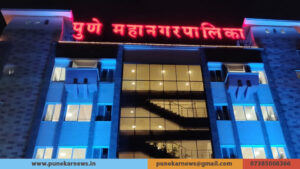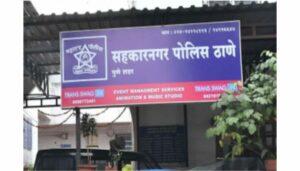VABB – Advanced technique to accurately diagnose breast cancer and remove smaller benign lumps

Pune, 21st October 2021: To commemorate the Breast Cancer Awareness Month of October, leading physician Dr Chaitanyanand B. Koppiker, Breast Onco Surgeon, Prashanti Cancer Care Mission, Pune emphasized on the importance of early detection of breast cancer as the only key to reduce mortality from this rapid disease. He also broke the common myth that breast cancer can occur only in older age groups. The percentage of women between 30-40 years being detected with the disease has more than doubled in the last two decades. *1 In recent times about 50% of women diagnosed with breast cancer each year are below 50 years of age. Women should be aware of advanced technologies like Vacuum-Assisted Breast Biopsy (VABB) which are highly beneficial in the diagnosis of breast cancer disease.
Emphasizing on the efficacy of VABB, Dr Koppiker added, “It helps sample and diagnose even the smallest of lesions which are often not sampled in regular biopsies. Additionally, VABB is also one of the safest means to remove benign lumps which commonly occur among women. The major advantages of Vacuum-Assisted Breast Biopsy technology in the removal of benign lumps are it is fast, minimally invasive, scar-free and is a day-care procedure. As October marks Breast Cancer Awareness Month, we urge women to pay attention to their breast health, keep a watch on symptoms that may indicate the need for medical diagnosis and not fear treatment as advanced solutions such as VABB offer much ease in breast cancer diagnosis and treatment.”
Women often feel anxious once lumps are detected in the breast even though they may be non-cancerous and benign lesions. In younger women (15-35 years), non-cancerous lumps Fibroadenomas are more common. Fibroadenomas comprise about 50% of all breast biopsies, and this rate rises to 75% for biopsies in women under the age of 20 years. A fibroadenoma might feel firm, smooth, rubbery, or hard and has a well-defined shape. Another extremely common condition, Fibrocystic breast disease also gives breasts a lumpy or rope-like texture and is diagnosed in millions of women worldwide.
Traditionally, these benign lumps would be removed surgically, causing much distress, leaving scars, or patients would choose to live with them in anxiety. Advanced technology like Vacuum-Assisted Breast Biopsy (VABB) comes to respite in such situations. VABB enables removing smallest of benign lumps without leaving scars or disfigurement of the breast which can be very reassuring for women.
Dr Chaitanyanand B. Koppiker added, “Early detection of the presence of any lump in the breast or armpit can be helpful to timely start the course of treatment. Even as breast cancer stands as the leading cause of mortality among women, there are many ways to counter the disease, if diagnosed at an early stage. Highly advanced technologies such as Vacuum-Assisted Breast Biopsy have proven to be extremely beneficial for patients by aiding in definitive and early diagnosis.”
VABB is a pioneering tissue sampling technique by which breast abnormalities (benign and malignant lumps) can easily be accessed through a small and single incision. It is performed with the help of either a mammogram or ultrasound, or MRI, to precisely identify the lesions. The ability of VABB to collect multiple samples with a single needle has the potential to reduce procedure times for patients and may reduce discomfort during breast biopsy in a minimally invasive manner. In addition, it ensures that tissue samples are taken from all parts of the lesion. The samples are then sent to laboratory for detailed analysis and to identify if the lump is malignant or benign.
VABB has been approved by FDA (USA) and NICE (UK) for complete removal of fibroadenoma. This advanced technology is widely used abroad and is now available in India and is helping women take charge of their health and outsmart breast cancer. The Vacuum-Assisted Breast Biopsy technology increases the efficiency, accuracy, and ease of targeting such small breast lesions and therefore is practiced as a gold standard across the globe.








